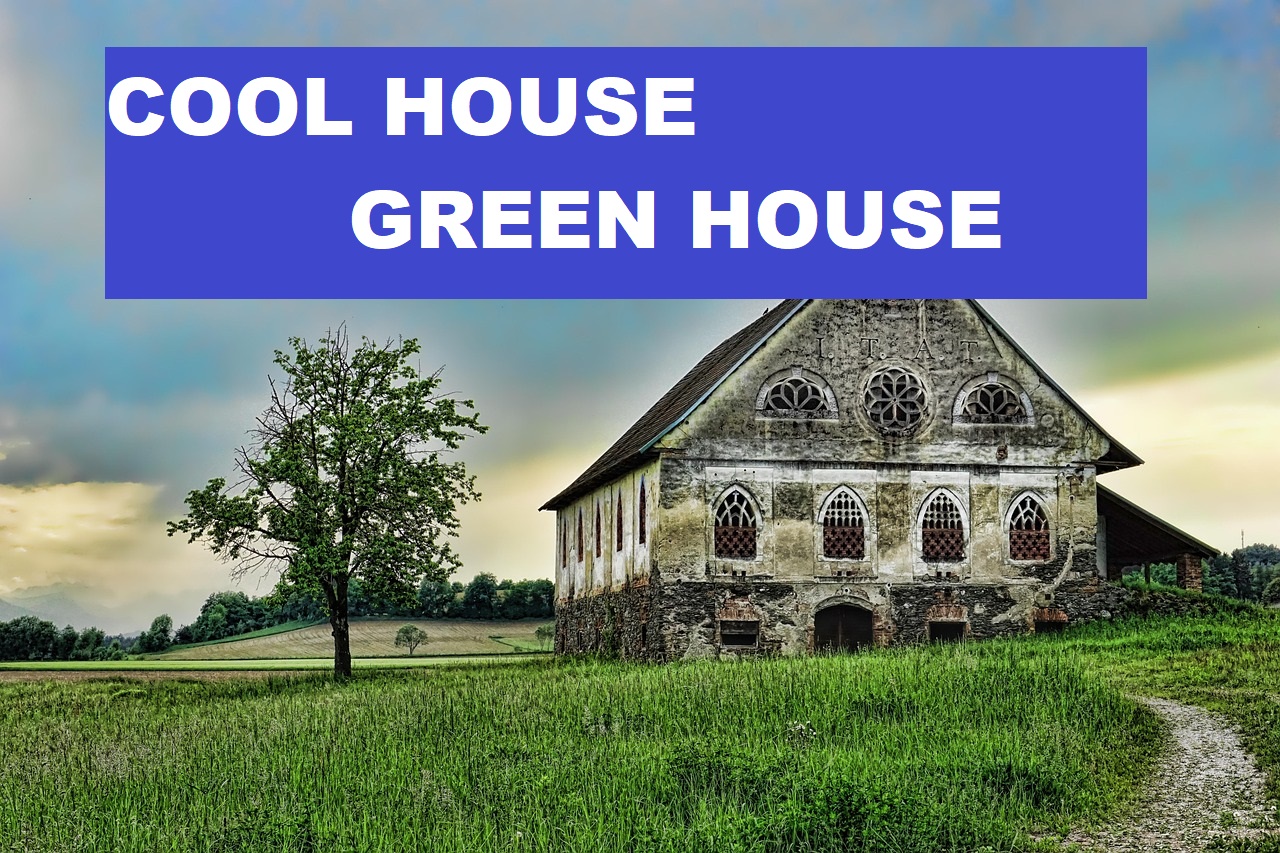Urban heat island solutions for Indian metro cities
Urban heat island solutions are significant in mitigating increasing temperatures in Indian metro cities, and thus they need to be undertaken with an emergency sense of urgency. To start with, urban planners can encourage cool roof technologies and reflective materials, which reduce heat uptake immediately.
Additionally, increasing urban forests, setting up green belts, and constructing rooftop gardens can significantly enhance air quality while minimizing the heat impact. In addition, effective water management such as rainwater harvesting and the revitalization of urban lakes moderates the microclimate. Additionally, smart cooling technologies like efficient air conditioning and district cooling systems promote comfort and sustainability.
Concurrently, awareness programs prompt communities to embrace green habits such as tree planting and decreasing automobile usage. Undeniably, solutions to urban heat islands rely on collaborative intervention between governments, the private sector, and citizens. Ultimately, when well-planned, urban heat island solutions are able to make Indian metro cities healthier and more resilient.
Urban heat island solutions for Indian metro cities
Introduction: Understanding the Urban Heat Island Effect
It is crucial to understand the Urban Heat Island Effect because it identifies how quickly urbanization transforms city climates.
Firstly, the Urban Heat Island (UHI) effect takes place when cities are warmer than nearby rural areas because of concrete buildings, asphalt roads, and
diminished vegetation.
Furthermore, excessive population, more energy usage, and automotive emissions also boost heat absorption in metro cities. Consequently, residents
experience extreme discomfort, increased electricity bills, and greater health hazards during hot summer days.
Moreover, urban ecosystems take a hit as heat stress lowers biodiversity and aggravates air pollution.
In addition, the UHI effect also affects water resources since increased evaporation rates stress already scarce supplies.
Thus, an understanding of this phenomenon becomes important for planners, policymakers, and citizens.
Finally, by determining the causes and effects, the stakeholders may plan the interventions effectively to reduce its impact.
Therefore, Introduction: Understanding the Urban Heat Island Effect provides the groundwork for sustainable city planning.
Causes of Urban Heat Islands
Reasons behind Urban Heat Islands in Indian Metro Cities are based on various human and environmental causes.
Fast urbanization
First, fast urbanization raises the density of concrete structures, asphalt roads, and paved areas, which are hotter and hotter in the sun compared to
natural environments.
High population density
Additionally, high population density means higher energy demand, as more houses and offices consume electricity for illumination, air conditioning, and
appliances, thus emitting more heat into the environment.
intense vehicular traffic
intense vehicular traffic generates considerable waste heat and greenhouse gas emissions that effectively increase local temperatures directly.
Moreover, the loss of green areas, i.e., parks, trees, and urban forests, constrains natural cooling via evapotranspiration and shade, exacerbating heat
trapping.
industrial operations
Lastly, industrial operations, such as power plants and factories, produce massive thermal energy, which adds to long-term urban warming.
Thus, all these five factors together intensify the Urban Heat Island phenomenon in Indian metro cities.
Hence, the recognition of these causes is necessary for policymakers, urban planners, and communities to adopt effective heat-mitigation measures and
develop sustainable, resilient cities.
Urban Heat Island Mitigation Solutions in Indian Metro Cities
Urban Heat Island Mitigation Solutions in Indian Metro Cities concentrate on mitigating heat buildup and enhancing urban resilience.
Use of Green Infrastructure
Firstly, the use of green infrastructure like parks, urban forests, and roof gardens offers natural cooling through evapotranspiration and shade.
Cool Roofs and Reflective Pavements
Additionally, cool roofs and reflective pavements on buildings and roads have the potential to substantially reduce heat uptake and keep surfaces cooler.
Additionally, the use of smart cooling systems, such as energy-efficient air conditioners, district cooling systems, and climate monitoring based on IoT,
saves energy and decreases heat generation.
Rainwater Harvesting
The strategies of water management, like rainwater harvesting, restoration of urban lakes, and sustainable drainage systems, moderate temperatures
locally while saving water.
Community Outreach and Awareness Initiatives
Lastly, community outreach and awareness initiatives motivate residents to plant trees, minimize automobile usage, and use environmentally friendly
techniques, contributing to a combined urban heat reduction impact.
As such, the five solutions combined offer a holistic strategy for fighting the Urban Heat Island phenomenon. Thus, when properly implemented, these
solutions ensure Indian metro cities are cooler, healthier, and more climate-resilient.
Green Infrastructure and It’s Role in Cooling Cities
The Green Infrastructure Role in Cooling Cities plays a crucial role in minimizing the Urban Heat Island effect in Indian metropolises.
Firstly, urban forestation, parks, and tree-lined streets offer natural canopy cover, which reduces ambient temperatures directly and decreases building and
road heat absorption.
Second, green roofs and vertical gardens not only act as insulators but also facilitate evapotranspiration, cooling air in the surrounding area. Besides, the
inclusion of water bodies and wetlands in urban areas also adds local cooling since the surfaces of the water bodies absorb heat during the day and emit it
slowly at night.
In addition, strategically located green corridors will enhance air movement, reduce wind turbulence, and feed cooler air into highly urbanized areas.
Last but not least, community gardens and pocket green spaces also empower citizens to take a proactive role in the greening effort, promoting both
environmental consciousness and social harmony. Thereafter, green infrastructure is an effective multi-purpose solution that is able to mitigate heat,
enhance air quality, and restore ecological conditions at the same time.
Hence, incorporating green infrastructure in urban planning and development makes metro regions more sustainable, livable, and resilient to increasing
urban temperatures.
Effective Solutions with Cool Roofs and Reflective Surfaces
Cool Roofs and Reflective Surfaces as Effective Solutions are essential measures to mitigate the Urban Heat Island effect in Indian metropolitan cities.
Firstly, using reflective coatings and light-colored materials on roofs and pavements reduces heat absorption and surface temperature.
Additionally, cool roofing technologies such as thermally insulated and reflective tiles provide indoor comfort along with reduced electricity use for cooling.
Moreover, reflective and permeable pavements also cool cities by letting water in and reflecting sunlight, reducing the overall heat captured in streets.
Last, when these surfaces are combined with green roofs, the cooling impact is increased through evapotranspiration and shadowing.
Lastly, government incentives and building codes push residents and builders to use these materials, furthering their implementation in cities.
Therefore,
cool roofs and reflective surfaces offer an instant, cost-saving, and environmental-friendly way to fight increasing urban heat in Indian urban centers.
Sustainable Urban Living with Smart Cooling Technologies
Smart Cooling Technologies for Sustainable Urban Living provide novel solutions to counteract the Urban Heat Island effect in Indian metro cities.
Firstly, the installation of energy-efficient air-conditioning systems decreases electricity utilization while ensuring pleasant indoor temperatures.
In addition, district cooling networks provide chilled water to several buildings, reducing overall urban heat production and increasing energy efficiency.
Besides, the use of IoT-based sensors and intelligent thermostats facilitates real-time temperature, humidity, and energy consumption monitoring, making
it possible to control the climate with accuracy.
Additionally, solar-powered air conditioning systems utilize sustainable energy, decreasing reliance on traditional power sources and lowering greenhouse
gas emissions.
Lastly, integrating these technologies with urban planning practices, including correct building orientation and ventilation system design, enhances their
performance and makes urban living sustainable.
Thus, intelligent cooling technologies not only enhance residents’ comfort but also lead to energy efficiency and environmental resilience.
Thus, they are key to developing heat-resilient and sustainable metro cities.
Urban Lake Restoration and Water Conservation
Water Conservation and Revival of Urban Lakes are important in minimizing the Urban Heat Island phenomenon in Indian metropolitan cities.
Firstly, the use of rainwater harvesting systems harvests rainwater and stores it, which reduces surface temperatures and is a reliable source of water
supply.
In addition, revival of urban lakes and ponds aids in regulating the local microclimate through enhanced evaporation and cooling of the surrounding
environment.
Apart from that, building permeable pavements and green water channels promotes groundwater recharge but avoids waterlogging, thereby reducing
urban heat stress indirectly.
Also, integrating community-based water conservation efforts prompts people to keep lakes clean, grow trees along water bodies, and adopt good water
utilization practices.
Lastly, government policies for lake rejuvenation and sustainable water resource management offer both funding and regulatory mechanisms for extensive
utilization.
As such, water conservation and rehabilitation frameworks for urban lakes jointly result in cooler, healthier, and more sustainable metro cities, while also
resolving issues of water scarcity.
Heat Resilience Programs and Community Participation
Role of Community Engagement in Heat Resilience Programmes is significant in reducing the impact of Urban Heat Island in Indian metropolitan cities.
First and foremost, engaging local residents in tree plantation campaigns and rooftop gardening schemes directly raises green cover, reducing ambient
temperatures.
Additionally,
promoting awareness and organizing workshops informs citizens of energy-saving practices, water conservation measures, and sustainable cooling
techniques, motivating active participation.
Moreover, community monitoring systems enable citizens to monitor temperature shifts, report heat hazards, and assist local administrations in applying
prompt interventions.
Moreover, joint action with schools, enterprises, and community organizations promotes responsibility and reinforces collective action against urban heat.
Lastly, citizen participation in urban planning ensures that policies and programs respond to actual needs and maximize effects.
Therefore, community engagement not only makes heat resilience initiatives more effective but also makes urban communities more informed, active, and
sustainable.
Policy Measures and Roadmap for Heat-Resilient Cities
Policy Measures and Future Roadmap for Heat-Resilient Cities are imperative to tackle the Urban Heat Island phenomenon in Indian metropolitan cities.
First and foremost, governments need to adopt building regulations and codes favoring cool roofs, reflective surfaces, and energy-efficient structures.
Further, urban planning policies should incorporate green infrastructure, open spaces, and water bodies to ensure ecological balance and minimize urban
temperature.
Besides, provision of monetary incentives and subsidies motivates developers, companies, and residents to embrace green practices and technology.
Moreover, with municipal, private sector, and community partnerships, heat mitigation efforts can be effectively implemented and monitored continuously.
Additionally, investments in research, innovation, and climate-resilient infrastructure equip cities to handle future temperature increases and hot weather
occurrences. In the end, these policy interventions and strategic plans provide a platform for sustainable urban growth.
Thus, through proactive planning and regulation, Indian metro cities can be made cooler, secure, and climate-resilient places for everyone.
Urban heat island solutions for Indian metro cities
Conclusion:
Urban heat island solutions provide viable and sustainable options to mitigate increasing temperatures in Indian metropolitan cities. Firstly, knowing the reasons behind the heat, for example, rapid urbanization, lesser green cover, and over-consumption of energy, assists policymakers and planners in shaping specific interventions.
Further, applying solutions like green infrastructure, cool roofs, reflectors, smart cooling technologies, and water harvesting measures effectively minimizes heat build-up and provides urban resilience. Besides, encouraging community involvement ensures that the people themselves participate actively in tree planting, rooftop gardening, and sustainable life habits, thus replicating the effects of these efforts.
In addition, effective policy interventions and long-term planning offer a vision for the long term, promoting the large-scale use of green urban design and climate-resilient infrastructure. Evidently, solutions to urban heat islands need technology, governance, and people participation. Eventually, when implemented as a whole, urban heat island measures can make Indian metro cities cooler, healthier, and more resilient places to live for all.





0 Comments